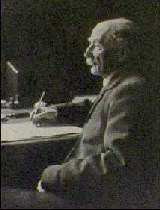
Born: June 12, 1840, in Dorset, England
Died: January 11, 1928, in Dorset, England
Thomas Hardy wrote novels and poems set in rural locations and narrated as legends of the time and place in which they were written. Overall, Hardy is seen as a brilliant and gifted writer, although the quality of individual works ranges from exceptional to poor.
Hardy was born in a thatched roof cottage. He was extremely fond of the rural area in which he spent his childhood. This area, which he refers to as Wessex, is the location in which all of his books take place. His only formal education occurred between the ages of eight and sixteen, after which, he became an apprentice to John Hicks, a local architect. At the age of twenty-one, Hardy moved to London and worked for the next five years under another architect, Arthur Blomfield.
During his time in London, Hardy submitted poetry and verse, but was rejected by editors and publishers. Not to be discouraged, Hardy returned to Dorchester in 1867 to begin writing novels. Here, he worked part-time for an architect to supplement his income.
With the help of George Meredith, Hardy's first novel, Desperate Remedies, was published in 1871. The work was published by Chapman and Hall, but anonymously and at Hardy's own expense. Hardy continued to publish anonymously until the release of his fourth novel, Far from the Madding Crowd, in 1874. At this point, Hardy gave up work with the architect to put all of his efforts into writing.
Once he began to achieve success as a writer, Hardy had the financial means to marry Emma L. Gifford. The couple had met on a trip to Cornwall in 1870. They never had any children and Emma died in 1912.
Hardy wrote many short stories, articles, and novels over the next twenty years. His last novel, Jude the Obscure, caused such an outpouring of rage that Hardy turned almost exclusively to poetry for the next thirty years. During this time, he wrote over 1000 poems, which include The Wessex Poems in 1898. He also prepared a comprehensive epic about the Napoleonic wars, entitled The Dynasts. His second wife, Florence Emily Dugdale, help him research this work, which was so immense that it was published in three parts between 1904 and 1908.